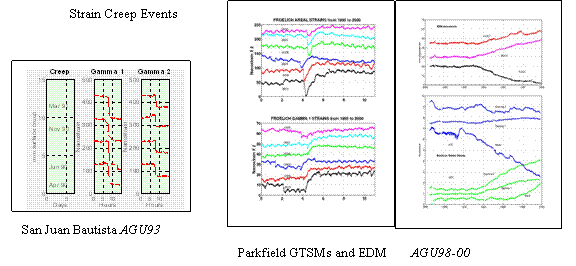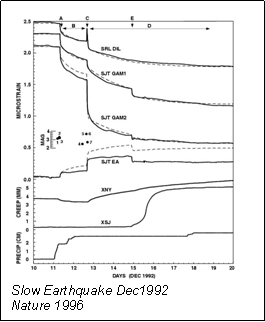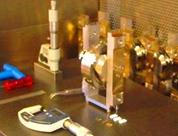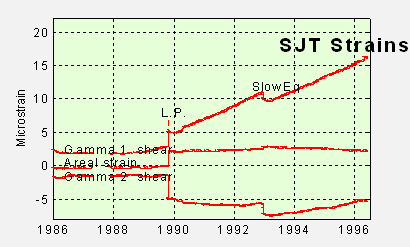
|
GTSM Technologies |
|
Home |
|
GTSM History |
|
Tensor Strain in California for NEHRP |
|
Tensor Strain in Taiwan |
|
Tensor Strain for PBO / Unavco |
|
Tensor Strain in Japan |
|
Mining Applications |
|
Stability Research |
|
Frequently Asked Questions |
|
Advanced Frequently Asked Questions |
|
Publications |
|
Contacts |
|
GTSM History |
|
HISTORY of GTSM Continued… The figures below show examples of data representations of event types uniquely monitored by GTSM systems during that period.
The development work was funded in the early seventies by the Australian Research Grants Commission, and since the late seventies by the US National Earthquake Hazard Reduction External Program (NEHRP). The NEHRP funding source is for utilisation of the technology in hazard monitoring via data production and interpretation. Over the next ten years, the GTSM group continued to develop both the scientific observational base (e.g. discovery of slow quakes on the San Andreas) and the interpretation techniques for understanding the new data.
In 1999, a major initiative was proposed by US-NSF (National Science Foundation) for earth sciences. This was to properly document all fault motions of the San Andreas. The initial proposal based on GPS monitoring was successful in 2002 in a wider context (the Earthscope Program) under the banner of the Plate Boundary Observatory (PBO) with GTSM instrumentation proposals included as a key component. By December 2002, GTSM had been selected as the borehole strainmeter instrument of choice for the PBO program .
The measurement technique developed for the technology summarized above has a wide range of potential applications. At its core, measurements of borehole diameter are made to a few picometre precision, and a very wide dynamic range with excellent stability has been achieved.
In April, 2002, in preparation for the possible US PBO program, a technical update of the original tectonic system was begun to exploit several newly available integrated circuits to replace component types no longer available, and to enable effective bulk production techniques. The first of these new generation instruments were deployed for Taiwan Geological Survey in 2003.
A contract for the US PBO program was let in October, 2004, and the GTSM production laboratory began construction in late 2004. Production of the first instruments for UNAVCO was completed and shipped to the Pacific North West for installation by June 2005. Further instruments have been fabricated and deployed in Taiwan in 2005 and 2006. The production facility now produces up to four instruments per month, which is totally adequate for the achieved rate of deployments in the PBO program. Initial contacts for other regional arrays have been made and are being explored. |


|
Shear Strain Anomalies associated with the Loma Prieta Earthquake
Nature 1992 |




